Warships. Cruisers. That's how it all started
Our story begins almost from the moment the First World War ended. The French admirals were in deep thought, because if the French fleet did not indicate participation in the war trampling in a Mediterranean puddle, it could be said that France did not fight at sea.
It so happened that there was nothing special to fight and no one with.
Composed of french fleet there were 3 dreadnoughts, 20 armadillos, 18 armadillo and 6 light cruisers, 98 destroyers, 38 submarines. In Paris, they decided to focus on the "Mediterranean Front", the benefit of the British agreed to protect the Atlantic coast of France. But in the Mediterranean Sea there was no big threat - the Navy of the Ottoman Empire was very weak and tied up by the Russian Black Sea Fleet, Italy was neutral at first, and then switched to the Entente side, the Austro-Hungarian fleet chose a passive strategy - “defended the Adriatic,” standing up in the bases. In addition, there was a fairly strong British squadron in the Mediterranean Sea.
So the main burden of the raiding war would fall on the cruisers if they were in the right quantity and quality in France. But alas, fossil armored cruisers of the Waldeck-Russo type, which were outdated at the time of their entry into service, formed the basis of cruising forces. That is, the French were faced with the inability to carry out full-fledged operations without cruisers. Fortunately, opponents allowed us to do nothing. So the French did not do anything.
But after the victory in the war, the victory that was actually won on land, France also thought about building ships.
In general, work on the light scout cruiser has been underway since 1909. A series of 10 ships with the lead “Lamotte Pique” was planned to be laid in November 1914.
The task of these ships was long-range reconnaissance with linear squadrons. Displacement of 4500/6000 tons, speed of 29 knots and the main caliber of 8 138-mm guns - in general, the cruiser looked pretty decent.
But land battles forced to postpone the construction of a series of ships and returned to the cruisers only in 1919. By that time, the French already knew about the American Omaha and the British E-series cruisers, so the project immediately began to radically refine in the style of “catching up and overtaking”.
The project was finally ready in April 1921, but changes to the project were made during the construction of the ships, and even after.
So the first French light cruisers such as the Duguet Truen were born.
They say: whatever you call a yacht, it will sail. The French tried in terms of names. The ships were named after the cult French naval commanders.
Rene Dugue-Truin was a privateer. A pirate in the service of the king. He simply plundered and drowned everything that came under the Spanish and Portuguese flag; he met old age at the rank of admiral in the service of King Louis XIV.
Hervé de Portzmoger with the call sign "Primoge" lived 200 years before Duguet-Trouin. He was a Breton, made a living by outright piracy, and quite normally tyrannized the British. When just piracy tired, he went to the official service of France and died in the battle of Saint-Mathieu. In Britain, many bagpipes were broken when they learned about it.
Jean-Guillaume-Toussin Earl de la Mott-Piquet somehow turned out to be a noble nobleman who rose to the rank of lieutenant general of the fleet. An exception…
A total of 3 units were built (Dugue Truen, Lamotte Piquet and Primoga).
These ships became the first light cruisers in the world with linearly elevated deployment of GK artillery in enclosed installations (towers). Almost had no serious armor protection. On tests, everyone confirmed the design speed at full displacement. They were distinguished by good seaworthiness; the disadvantages include a small navigation range, especially at high speeds.
The ships officially went into operation in late 1926 - early 1927, but after that they repeatedly returned to the shipyards to install various equipment and became fully operational only by the end of 1929.
Duguet Truen. Laid on August 4, 1922 in Brest. Launched on August 14, 1923. It was commissioned on September 10, 1926. Decommissioned on March 29, 1952 and sold for scrap.
Lamott Piquet. Laid down on January 17, 1923 in Loriana. Launched on March 21, 1924. It was commissioned on October 1, 1926. The entire service of the ship took place in French Indochina. He participated in the conflict with Thailand in January 1941. He played a major role in the defeat of the Thai fleet at Koh Chang on 17.1.1941. January 12, 1945 sunk by an American deck aviation in Kamrani.
Primoga. Laid on August 16, 1923 in Brest. Launched on May 21, 1924. It was commissioned on September 1, 1926. During the war he remained under the control of Vichy. On November 8, 1942, in the course of counteracting the Allied landings in North Africa, he was severely damaged by shells and air bombs in the Casablanca area, landed on the shore and burned down.
What was the firstborn of cruising, which later became a classic?
The cruisers had a high-breasted hull with a half-tank design. This ensured high seaworthiness on the one hand, but the ships were very vulnerable to crosswinds. The cruisers had two continuous decks and one platform. The hull was divided into compartments by 17 transverse bulkheads, had a double bottom, as well as a double side in the area of machine-boiler rooms.
Of the armor, the Duget-Truen type cruiser had only 20 mm upper and 10 mm lower decks. Cellars, where ammunition was stored for the main caliber, were protected by armor from 20-mm sheets, which had the shape of a box.
The steering gear compartment was protected by a 14 mm bevel deck. The main caliber towers and their barbets were covered with 30 mm armor. The conning tower also had 30 mm walls and a roof. The total weight of the armor was only 166 tons, or 2,2% of the standard displacement.
In general, more than modest. More precisely, in any way. The armor seemed to be, but at real combat distances, the cruiser could be hit anywhere even by destroyer guns.
Displacement:
Standard - 7249 tons, full - 9350 tons.
Length 175,3 / 181,6 m. Width 17,5 m. Draft 6,3 m.
Engines 4 TPA Rateau-Bretagne, 100 liters with. Speed 000 knots. Cruising range 33 nautical miles at 4500 knots.
Crew 578 man.
Reservation Towers - 25-30 mm, cellars - 25-30 mm, cabin - 25-30 mm.
Armament.
Main caliber: 4 twin-gun turrets with 155 mm guns. The angles of vertical guidance ranged from −5 ° to + 40 °, horizontal provided firing in a radius of 140 ° on each side. The weight of the shells ranged from 56,5 kg to 59 kg. The initial velocity of a semi-armor-piercing projectile weighing 56,5 kg with a full charge was 850 m / s, and the maximum firing range was 26 meters. The ballistic data of the guns was evaluated as excellent, but the rate of fire was low. Formally, it was 100 rounds per minute, in fact it was half as much.
Anti-aircraft artillery: 4 guns 75 mm, 4 machine guns 13,2 mm.
Mine-torpedo armament: 4 three-pipe 550-mm torpedo tubes, depth charges.
Aviation group: 1 catapult, 1-2 seaplane GL-832 or Pote-452.
Of course, as soon as the ships went into operation, they began their movement along the stairs of modernization and improvement. And the war that began in 1939 generally introduced corrections in batches.
In general, the ships were redone very seriously, and work was carried out after the war. But the efforts were not in vain; it’s enough to look at the service life of Duguet-Truen, 26 years is a lot. Especially considering the war and the transition to missile ships that began after it.
The change of priorities forced the cruiser to part with torpedo tubes and depth charges and focus on modernizing air defense. Destroyers could fight normally with submarines (bombs) and ships of all classes (torpedoes).
Dyuge-Truen lost during the modernization all mine-torpedo weapons, a catapult and a crane-beam, a main mast. The 13,2 mm Hotchkiss machine guns, which proved to be completely incapable of being anti-aircraft, were also removed.
Instead, 6 Bofors submachine guns of 40 mm caliber, 20 Erlikonov (20 mm) and 8 Browning machine guns (13,2 mm) were installed on the cruiser in several stages.
The standard cruiser began to look more like something that could deal with aviation. When this was added to the radar ONTS type SF-1944 in 1, it became very decent.
Recent work at the Duguet-Truen was carried out in Saigon. In the years 1948-1949. the ship was remade for slightly different tasks and carried on board 2 LCVP type infantry assault boats.
Ships were distinguished.
Dugue-Truin:
- one white stripe on the nasal tube (21.7.1928 - 1.10.1929);
- two white stripes on the stern pipe (5.9 1931 - end of 1932);
- one white strip on the aft pipe (May 1935 - July 1936).
Lamott Pique:
- one white strip on the aft pipe (5.9.1931 - 24.7.1932);
- one red stripe on the nasal tube (May 1939 - June 1940).
Primoga:
- one white strip on the stern pipe (1.1.1928 - end of 1928);
- two red stripes on the nasal tube (May - August 1939).
The service of ships and destinies were different and ambiguous.
After entering into service, the Duget-Truen was included in the 3rd Light Division of the 1st Squadron, based on Brest. In general, his career in the early years proceeded in ordinary campaigns and maneuvers in the Atlantic and the Mediterranean.
The beginning of the war caught the ship on the transition from Casablanca to Dakar. Until January 1940, the cruiser operated in the waters of the Central Atlantic, participating in escorting convoys and searching for German merchant ships and raiders. His only success was the interception on October 16 of the German steamboat Galle (5889 gross).
On May 1, 1940, after repairs, the Duget-Truen was assigned to the Levant Division and at the end of the month became part of Compound “X” of Vice Admiral Godfroix, created for operations in the Eastern Mediterranean together with the British fleet. On June 11, he participated in a raid on the Dodecanese Islands, and on June 21-22, in a similar operation against Tobruk.
July 3, when the British carried out Operation Catapult (seizing the French ships located in their bases), the Dugue-Troisen, along with the battleship Lorraine and the heavy cruisers Duchenne, Turville, Suffren, were in Alexandria, where July 5 was disarmed and remained there until May 17, 1943, when Admiral Godfroix decided to join the Allies.
On July 4, 1943, the Suffren and Duget-Truen left Alexandria and arrived in Dakar on September 3.
Until the end of the year, Dugue-Truen underwent modernization, after which during the first half of 1944 it was used as a high-speed military transport on the Mediterranean Sea.
In August, together with Emil Bertin and Joan of Arc, he formed the 3rd division of cruisers and on August 15-17 provided fire support to the landing in Southern France (Operation Dragoon), after which he again engaged in military transport, and April 1945 participated in the shelling of German positions in the area of Genoa. Until the end of 1945, the ship was engaged in the transport of troops and civilians between French, Algerian and Moroccan ports, having traveled more than 20 thousand miles during this period.
On the whole, it’s not a very cruising fate, but it’s worth remembering that France as a state had ceased to exist by that time.
After the end of the “victorious” war for France, Duguet-Troyen in the spring of 1947 was sent to the Far East. Through Madagascar, where anti-French unrest erupted. The main service for the next four years was in Indochina.
On June 5, 1948, Duguet-Truen entered history, since on board an agreement was signed on the unification and guarantees of the future independence of Vietnam.
In general, after the war, the cruiser was very actively involved in regional conflicts. In total, from August 1949 to May 1951, the ship covered more than 25 thousand miles and carried out 18 live firing, using up 631 155 mm shells - more than during the entire Second World War.
Actions against the rebels on about. Fukuok (January 1948 and January 1949), shelling of Natrang and Fife (February-March 1949), landing in the Gulf of Tonkin (October 1949), landing at Tam-Tam (May 1949). In April 1951, the cruiser’s guns stopped the Viet Min attack on Haiphong.
In general, the old cruiser quite successfully fought with the rebels.
The end of the story came on September 22, 1951. The Dugue-Truen left Saigon and was in Toulon exactly one month later. December 1, 1951 the cruiser was withdrawn to the reserve category "B". March 29, 1952 he was expelled from the lists of the fleet and March 27, 1953 sold for scrap.
“Lamott Piquet” at the beginning of his career conducted routine crew training, which was disrupted by a campaign in South America in 1927.
After undergoing major repairs in 1933-1935, on November 2, 1935, Lamott Piquet went to Indochina to replace the Premoge located there. Arriving in Saigon on December 30, he was based on this port until the end of his career, and until the end of 1940 all the commanders of the French Navy in the Far East kept their flag on it.
With the outbreak of World War II, the Lamott Piqué operated in the Far Eastern waters, patrolling and searching for German ships. The news of the truce found him in Saigon. However, the tension in relations with Thailand that increased since November 1940 led to the outbreak of conflict, in which the French naval forces took the most active part.
During the only major naval battle at Koh Chang in the Gulf of Thailand on January 17, 1941, a detachment consisting of Lamotte Piquet and the advice notes Admiral Charnier, Dumont d'Urville, Tayur and Marne inflicted serious damage on the enemy defeat, having sunk the battleship of the coastal defense “Tonburi” and the destroyers “Chonburi” and “Songkla” without losses on their part. During the battle, the cruiser fired more than 450 shells and 6 torpedoes.
Subsequently, the operations of the French naval forces in the Far East were reduced to several insignificant exits; moreover, the situation was aggravated by the deplorable state of the cruiser’s mechanisms.
On January 1, 1944, the cruiser was put into reserve and was used as a stationary training ship. On January 12, 1945, the ship was sunk by deck aircraft of the American operational formation TF.38.
Primoga began its service around the world: on April 20, 1927, he left Brest and returned on December 20, leaving behind stern 30 thousand miles in 100 working days. Since 1928, the cruiser was assigned to the 3rd division. Over the next few years, he spent several months annually on long voyages, having visited Halifax and the Azores (1929), the Caribbean (1930), Senegal, Cameroon and Gabon (1931).
A significant part of Primoge’s career took place in the Far East. He first went there on April 15, 1932, and stayed until January 10, 1936, visiting Japan, China, the Philippines, and the Dutch East Indies. Returning to France, the cruiser underwent extensive repairs, at the end of which he again received an order to move to Indochina.
The beginning of the war "Primoga" met in Takoradi. Taking part in the escort of several convoys, on October 25 he came for repairs to Lorian. Since March 1940, the cruiser was based on Oran and completed a number of tasks, including exploring the Canary Islands to obstruct enemy navigation.
On April 1, 1940, Primoga arrived in Fort de France in Martinique, where he replaced Jeanne d'Arc. In April, the cruiser controlled shipping in the waters of the West Indies, inspecting about 20 ships.
On May 6, together with the British sloop Dundee, he landed troops to defend the oil fields in the Aruba region, where on May 10 he sank the German transport Antilla (4363 gross vehicles).
On June 19, Primoga returned to Brest, from where on the 25th it moved to Casablanca with a load of banknotes and gold from the reserves of the Bank of France, and on July 9 to Dakar. On September 4, the cruiser was sent to Liberville (Equatorial Africa) as an escort of the Tarn tanker, designed to support the 4th cruiser division. In Benin Bay, the French force was intercepted by the British cruisers Cornwall and Delhi, after which Admiral Burrahe (flag on the cruiser Georges Leig) ordered Primoga to return to Casablanca to avoid incidents.
During 1941-1942. the ship only occasionally went to sea for training. In April 1942, Primoga became the flagship of the 2nd light squadron, which included the 11th division of leaders, the 1st, 2nd and 5th divisions of destroyers.
On November 8, they turned out to be the only force that resisted the Allied landing (Operation Torch).
At this time, the cruiser was under repair, but, despite this, together with 5 destroyers went to sea to counter the Allied fleet, consisting in this area of American ships.
To resist as a whole did not work out very well. More precisely, it did not work out at all. French sailors could not cause any damage to American ships. But the American cruisers were able to withdraw the French ships very quickly and completely without loss.
Primogo received several 152-mm shells from the Brooklyn cruiser, after which it was finally finished off with bombs from the Ranger aircraft carrier and landed on the shore, where it burned all night. They decided not to restore the ship, and after the war they dismantled it for metal.
What can be said in the end?
And in the end, we have quite innovative ships that have defined the development vector of light cruisers around the world for several decades. These cruisers became the first light cruisers in the world, in which all the artillery of the main caliber was located linearly elevated in tower installations.
All other ships of this class will be later.
As for the combat qualities, here it’s for sure “everything is ambiguous,” and even according to the full program.
The pluses are high firepower, powerful torpedo weapons, high speed and excellent seaworthiness.
In the disadvantages - conditional booking and a short range. The swimming range can only be considered sufficient for limited theaters such as the Mediterranean Sea or skiing around Thailand or Vietnam.
In general, as the main merit of the Duguet-Truen type cruisers, we can say that these ships became the starting point in the development of the class of light cruisers. So the place in the history of French ships is rightfully taken. And the fact that followers have become faster, more powerful and stronger is quite normal. The first is always difficult.
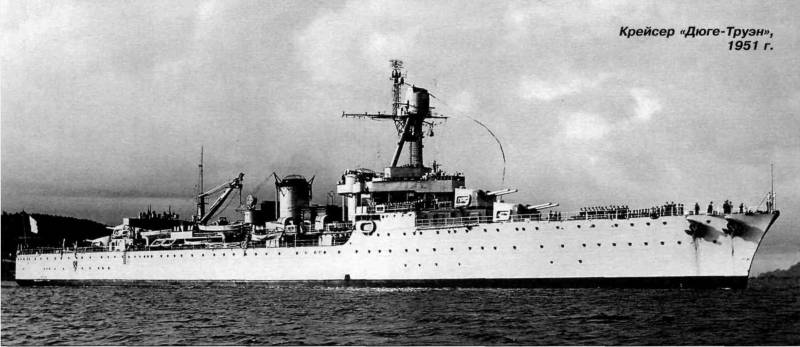
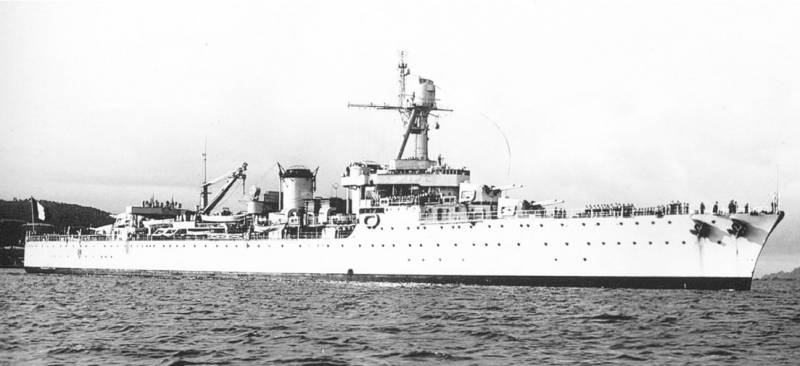
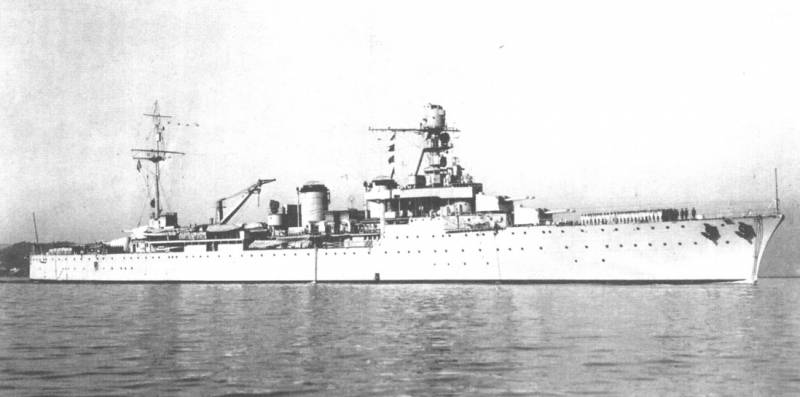
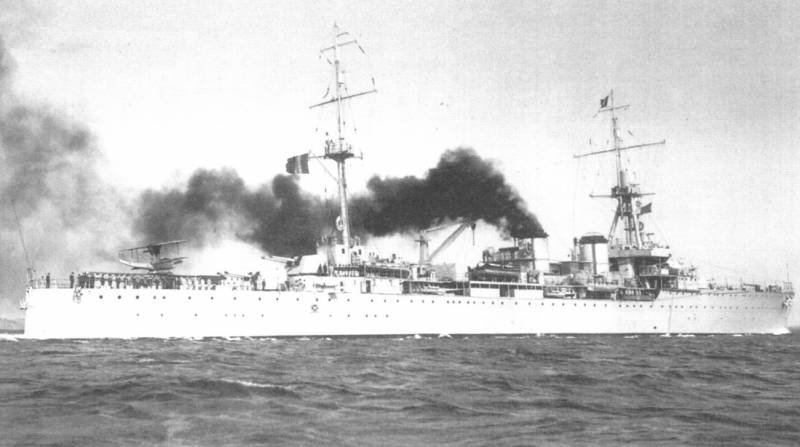
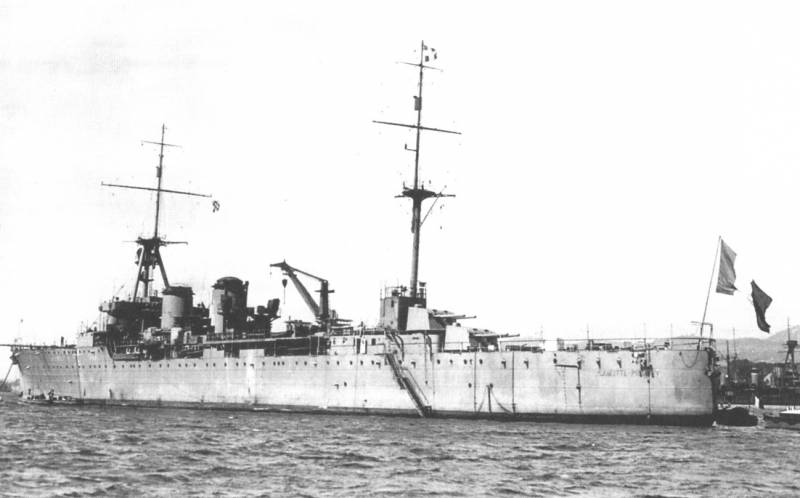
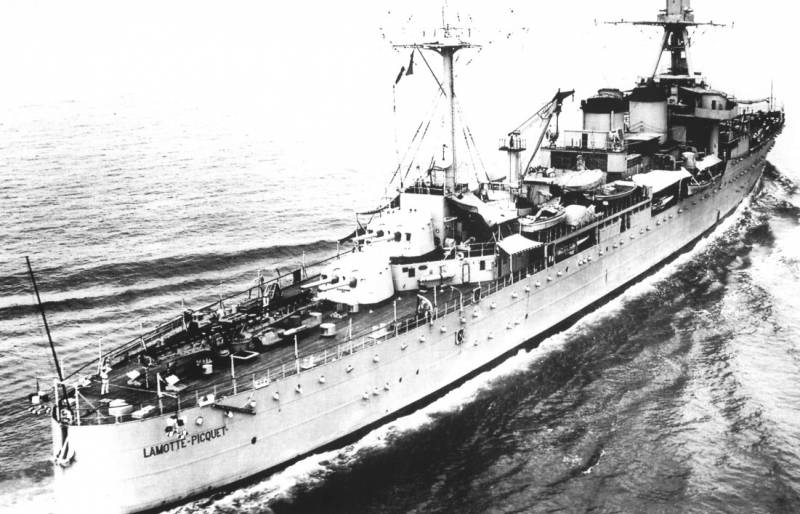
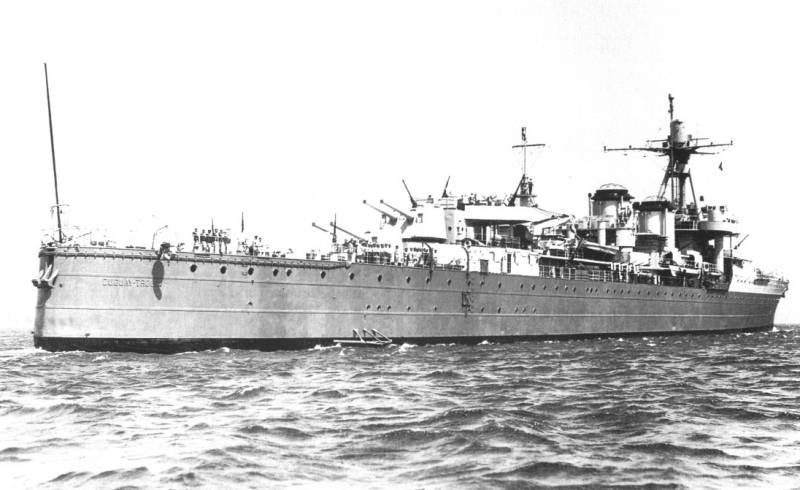
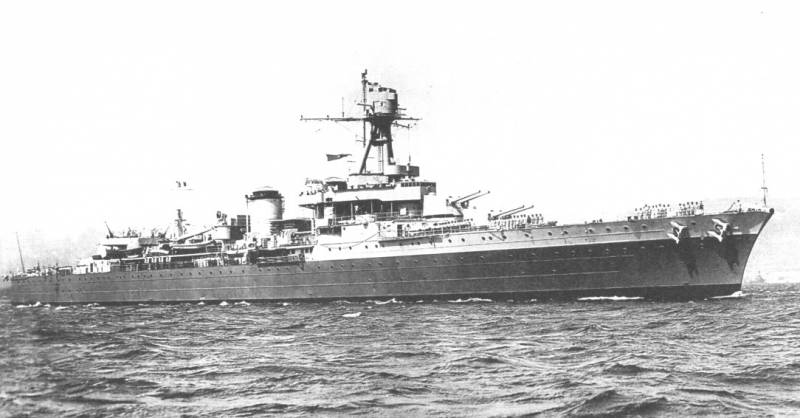
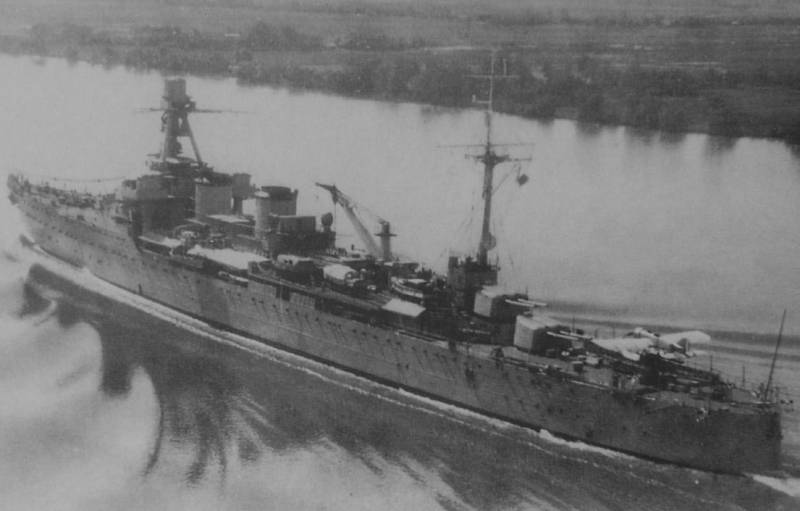
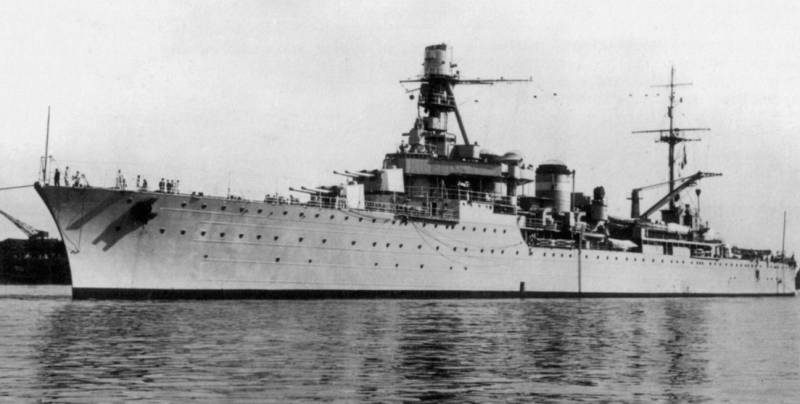
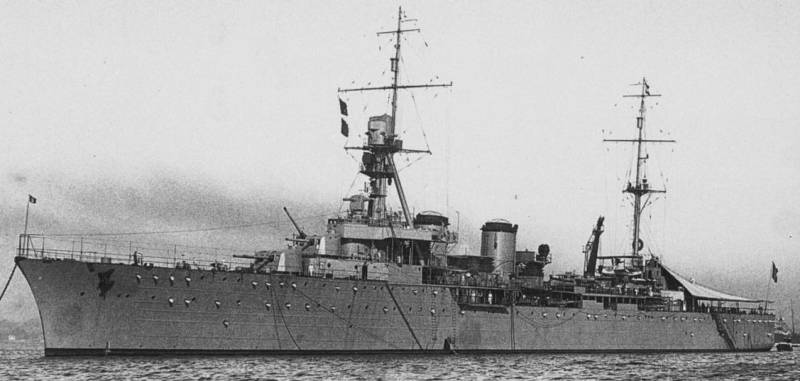
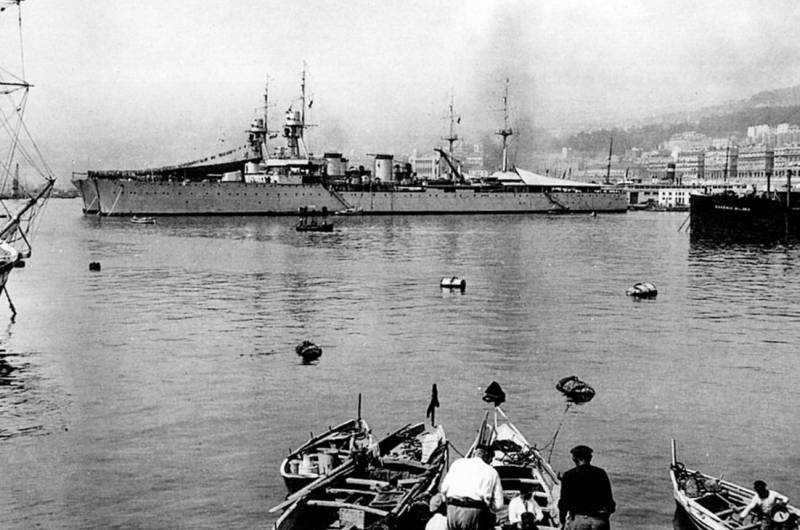
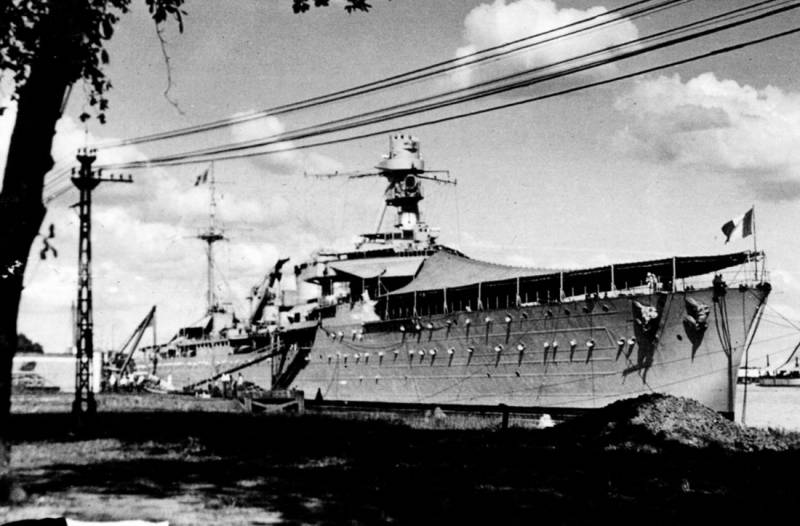
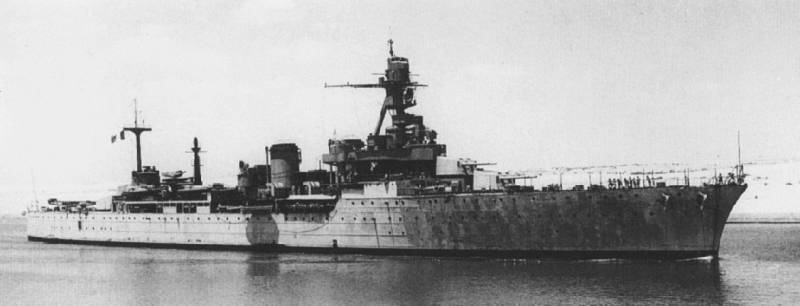
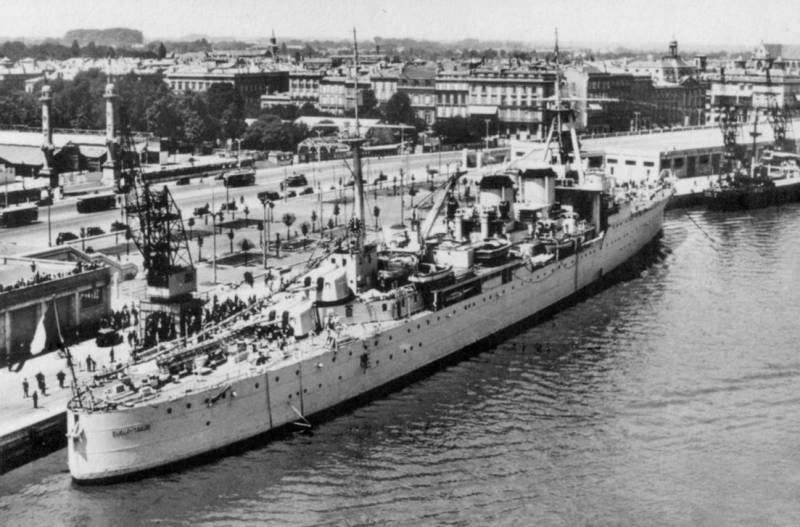
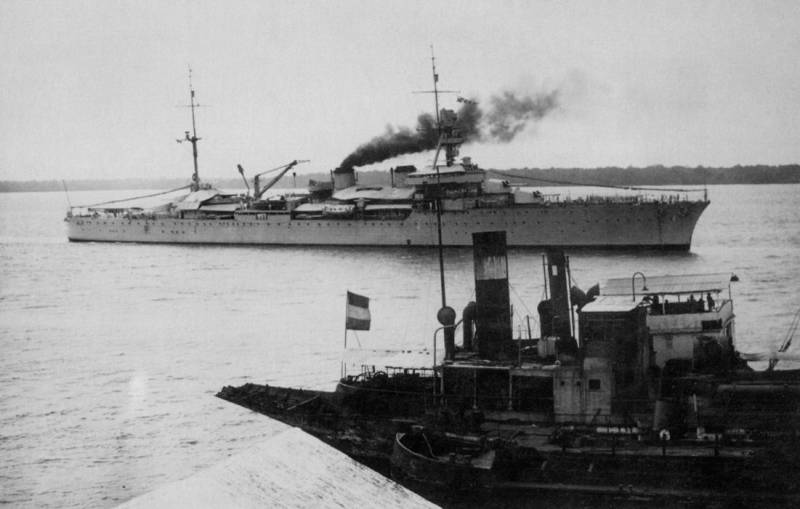
Information